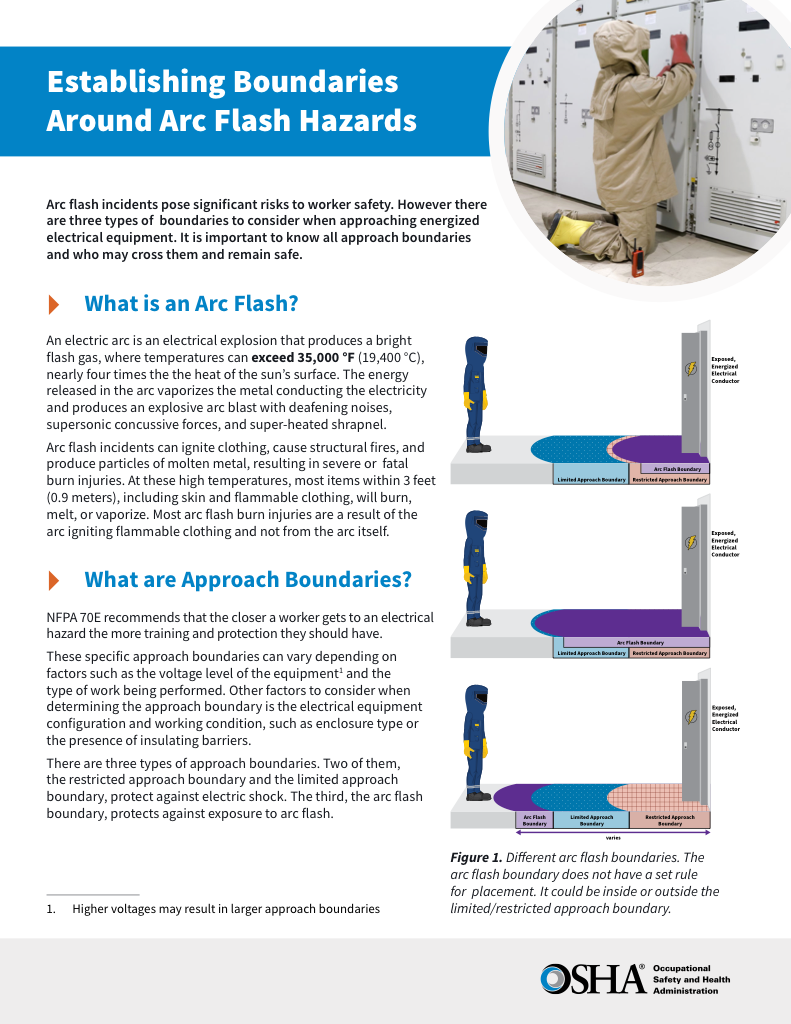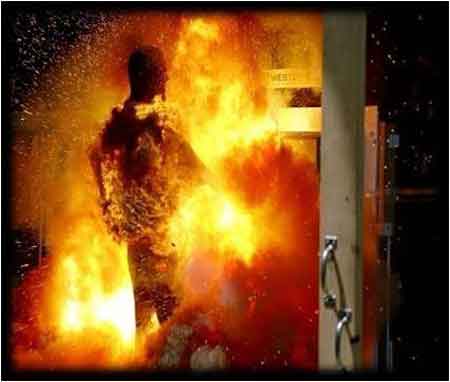Arc Flash Assessment – Technical Evaluation
By R.W. Hurst, Editor

CSA Z462 Arc Flash Training - Electrical Safety Essentials
Our customized live online or in‑person group training can be delivered to your staff at your location.

- Live Online
- 6 hours Instructor-led
- Group Training Available
Download Our OSHA 4474 Fact Sheet – Establishing Boundaries Around Arc Flash Hazards

- Understand the difference between arc flash and electric shock boundaries
- Learn who may cross each boundary and under what conditions
- Apply voltage-based rules for safer approach distances
An arc flash assessment evaluates electrical systems to calculate incident energy, identify hazards, and define PPE requirements. It ensures NFPA 70E and OSHA compliance, reducing arc flash risk through precise hazard analysis.
What is an Arc Flash Assessment?
An arc flash assessment is a detailed engineering study that analyzes electrical hazards, calculates fault energy, and defines safety boundaries.
✅ Determines incident energy and PPE categories
✅ Improves NFPA 70E and OSHA compliance
✅ Enhances electrical safety and system reliability
Request a Free Training Quotation
Understanding Arc Flash Assessment
An arc flash assessment is a quantitative electrical hazard analysis that models the electrical network to determine potential fault conditions, calculate incident energy, and establish arc flash boundaries. Unlike regulatory reviews that focus on compliance, this assessment is a diagnostic engineering study; it reveals the physics behind the hazard and identifies how design or operational changes can minimize risk.
Why It Matters
The value of an assessment lies in its ability to transform raw electrical data into actionable safety intelligence:
-
Pinpoints areas of elevated fault current and high energy potential
-
Provides accurate PPE category requirements for specific equipment
-
Informs system design changes that can reduce incident energy
-
Enhances reliability by uncovering coordination or protection gaps
Core Elements of an Arc Flash Assessment
-
System Data Collection
Detailed data is gathered for switchgear, panels, breakers, and transformers—conductor sizes, lengths, impedance, and device trip settings. -
Short-Circuit Analysis
Software models simulate fault conditions to determine available fault current magnitudes throughout the system. -
Protective Device Coordination
Engineers verify whether upstream and downstream devices operate selectively to clear faults efficiently and prevent cascading outages. -
Incident Energy Calculation
Using IEEE 1584 methodologies, the engineer computes thermal energy exposure at each bus or work location. -
Boundary and PPE Determination
Safe approach distances are established, and PPE categories are matched to the calculated energy values. -
Labelling and Reporting
Equipment labels summarize critical data—incident energy, flash protection boundaries, and PPE levels—supported by a comprehensive technical report.
Arc flash labels are the final outcome of an arc flash risk assessment and serve as a vital communication tool for workers operating around energized electrical equipment. Each label summarizes critical results from the arc flash study, including voltage level, calculated arc flash boundaries and required PPE for safe work distances. These details come directly from the incident energy analysis, which determines the potential thermal energy released during a fault. Properly maintained arc flash labels ensure that personnel have accurate, site-specific information at the point of use, reducing risk and promoting compliance with NFPA 70E and OSHA electrical safety standards.
Sign Up for Electricity Forum’s Arc Flash Newsletter
Stay informed with our FREE Arc Flash Newsletter — get the latest news, breakthrough technologies, and expert insights, delivered straight to your inbox.
Who Performs the Assessment
Only qualified electrical engineers or protection specialists with expertise in fault analysis and system modelling should perform this study. They must be proficient with IEEE 1584 equations, modelling tools such as ETAP or SKM Power*Tools, and the interpretation of protection coordination curves.
Recommended Frequency
An assessment should be updated:
-
Whenever equipment configuration, transformer capacity, or protection settings change
-
After major maintenance or system expansion
-
At least every five years to maintain data integrity and compliance alignment
Challenges and Engineering Considerations
Accurate results depend on the precision of system data and the fidelity of the model. Complex facilities with multiple voltage levels often face difficulties such as incomplete as-built drawings, inaccessible equipment, or inconsistent labelling. Engineers must also interpret how protective device time-current curves interact during multiple fault scenarios to ensure reliability and selectivity.
Benefits to Electrical Safety and Operations
-
Quantified Risk Awareness: Converts abstract hazard levels into measurable engineering data
-
Design Improvement: Guides breaker or relay setting adjustments to minimize incident energy
-
Operational Efficiency: Reduces unnecessary PPE by isolating high-risk zones precisely
-
Worker Protection: Ensures employees operate with accurate, site-specific information
Software Tools and Analytical Techniques
Modern arc flash analysis software automates the iterative calculations once performed manually. Programs integrate one-line diagrams, protective device libraries, and fault modelling algorithms to generate visual reports and hazard labels instantly. This integration increases accuracy and simplifies long-term system maintenance and re-evaluation.
An arc flash assessment is not merely a paperwork exercise—it is a scientific and engineering investigation into how electricity behaves under fault conditions. By performing these analyses regularly and acting on their findings, organizations achieve safer workplaces, more reliable power systems, and informed NFPA 70E compliance as well as with CSA Z462. The process empowers electrical professionals to move beyond regulatory obligation toward proactive hazard elimination.








